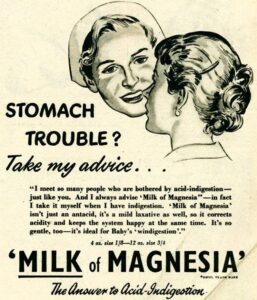 I was asked today to review the idea of using milk of magnesia in a roll-on bottle as a deodorant. Because I was asked to share the information more widely, I post it here for broader reading. After a bit of research, here are my thoughts:
I was asked today to review the idea of using milk of magnesia in a roll-on bottle as a deodorant. Because I was asked to share the information more widely, I post it here for broader reading. After a bit of research, here are my thoughts:
I hadn’t looked into milk of magnesia before, as I’ve had no occasion to use it. Although it is used as an antacid, it isn’t chalk. Usually chalk is carbonates – calcium carbonate, magnesium carbonate… Calcium carbonate is used as a calcium supplement in vitamins, and I remember using magnesium carbonate on my hands in gymnastics. Milk of magnesia appears to be magnesium hydroxide. Because of the hydroxide ion, it is quite basic.
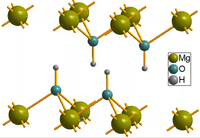
Milk of Magnesia
Magnesium itself is something to be aware of. Bodies need magnesium to function properly, but most people get enough magnesium from the food they eat, because only a small amount is needed. It is possible to overdose on magnesium, which is one reason why common instructions for internal use of milk of magnesia say to use for no more than seven days. Some forms of magnesium can be absorbed through the skin, including the magnesium in Epsom salts (magnesium sulphate crystals), and since skin dosing is a very imprecise method, please use with caution. I do use distilled water containing dissolved Epsom salts to rinse my hair every few days to reduce itching, but that is every few days, not every day, and I rinse the solution off within a few minutes, so absorption is limited as compared to leave-on products like deodorant. Again, please use with caution.
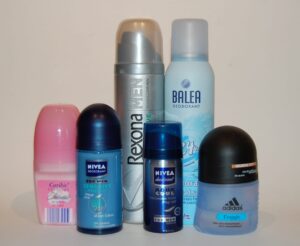
Common Deodorant Brands
For milk of magnesia being used on the skin, ignoring the magnesium concern expressed above, people with isothiazolinone allergies could experience reactions to some of the fillers. Every brand will have different ingredients, but carboxymethylcellulose and microcrystalline cellulose could both be treated with isothiazolinones prior to being used in milk of magnesia (either the capsules/tablets or the liquid). The mixtures can also contain flavourings/scents that could affect people with fragrance allergies (fragrances and flavours contain many of the same compounds), and sugar, which can promote yeast and other bacterial growth, depending on the type of sugar used. The Phillips suspension I found contained a small amount of sodium hypochlorite (bleach), which would act as a biocide preservative in solution and may help reduce bacterial growth. More of the “use at your own risk” thing.
As for bases helping with the bacteria/odour…
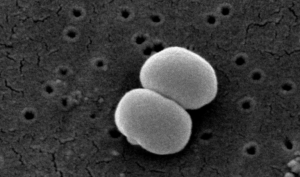
Staphylococcus Epidermidis
I have read online that some of the most common skin bacteria, including staph, thrive in alkaline environments. When I recently did some plant-based pigment experimentation, obvious bacterial growth primarily occurred in the acidic environment (or, equally likely, the extensive bacterial growth in certain jars created an acidic environment). Every microbe has different requirements for growth. The bacteria that cause sweat to smell are breaking the protein in sweat down into acids, which give the sweat its smell. The two most common bacteria causing stinky sweat are propionibacteria and a form of staph bacteria, staphylococcus epidermidis.
Since staph bacteria can tend to thrive (multiply faster) in alkaline environments, this would lead me to believe that a slightly alkaline environment wouldn’t necessarily help reduce bacterial growth. On the flip side, it appears that staph bacteria have cellular mechanisms to accommodate survival in acidic environments, as long as there is food. This means that making your armpits acidic isn’t a good answer either. And staph. epidermidis also can multiply without oxygen, so covering your skin with an oil to prevent oxygen from getting in won’t really help either. Propionobacteria also appear to thrive in alkaline environments. Using a mild base to neutralize the smelly acids from the bacteria-processed sweat might help, but it’s a temporary measure, because that then makes the environment more favourable for the bacteria, who will continue to eat and reproduce.
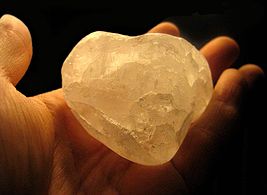
Alum
One thing I did note is that staph bacteria are not independently mobile, so if the sweat is pulled away from them, they may have a harder time replicating due to lack of food. This may be why natural, aluminum-free antiperspirants (products that reduce build-up of sweat by absorbing it) can help. Traditional antiperspirants contain aluminum salts which enter the pores and block them to prevent sweat from exiting the pore. (The staph bacteria live in the pores, too.) Alum is a salt of aluminum, too, for those of you who have alum-containing “natural” antiperspirants. Of course, starting with clean skin is very important to holding off the smell of sweat. Fewer bacteria to begin with means slower initial growth.
Lastly, the idea of putting strong bases (high pH substances) on your body. Bases are corrosive to organic matter, like skin and hair. Magnesium hydroxide is said to have a pH of around 10, which is a strong base, around the same as washing soda, which is not suitable for use on the body. Presumably the fillers and slightly acidic ingredients in the milk of magnesia would dilute and bring down the pH to a slightly more neutral level, otherwise I cannot imagine anyone suggesting that this product be ingested, which it obviously is. I would be curious about testing the pH of the suspension liquid (or tablet broken down and mixed into water) directly. I can’t find this online to comment.

Baking Soda Reaction
Finally, I must share my own deodorant recipe. Because pure ingredients are used, there is no danger from fillers or fragrances, and if there is a problem, you can easily switch out a single ingredient. The baking soda used (while also heavily diluted) is of a lower pH than magnesium hydroxide, making it a little more skin-friendly. Regardless of the mechanism, people have found for over a century that baking soda helps reduce odour, far beyond body odours. The other powder acts as an absorbent, and the other ingredients as vehicles for easy application and helping it to stay put. I finally got my husband to try this this summer in high heat and humidity when he forgot his deodorant for a multi-day, sports-type event, and he was surprised at how well it worked.
